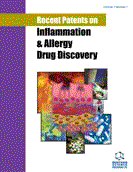Abstract
It is well established that airway inflammatory processes are pivotal as the pathological features of asthma. Prominent infiltration of eosinophils and Th2 lymphocytes is a hallmark of the allergic inflammation, and inhaled corticosteroids markedly suppress such inflammatory changes, resulting in clinical beneficial effects. Aerosol delivery of anti-asthma drugs such as corticosteroids is ideal from the standpoint of maximizing local effects in the lung as well as minimizing systemic side effects compared with oral therapy. The 1987 Montreal protocol banned chlorofluorocarbon (CFC) propellant in pressurized metered-dose inhalers (pMDIs), which has been replaced with hydrofluoroalkane (HFA) propellant. The aerodynamic diameters of HFA are much smaller than those of CFC, suggesting a greater distribution in peripheral airways. New types of dry powder inhalers (DPIs) and nebulizers, that do not use propellants, also have been introduced. Performance of each drug delivery device depends on a variety of factors including the device type, particle size and distribution, the product formulation and patient-related factors. Therefore, drug delivery can differ even when the same drug is delivered via an HFA pMDI, a CFC pMDI, a DPI or a nebulizer. New and advanced devices can be helpful to maximize the advantages of these modes of drug delivery, and patents of novel invention of inhalation devices are described.
Keywords: Asthma, drug delivery, pressurized metered-dose inhalers, dry powder inhalers
 7
7


















